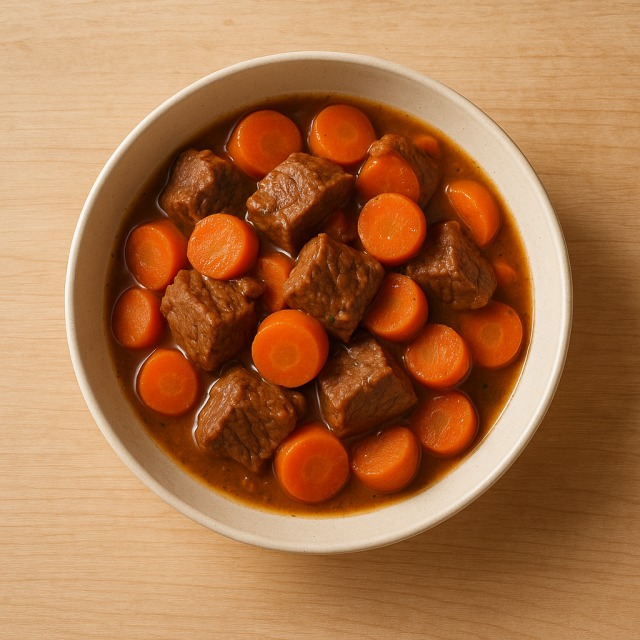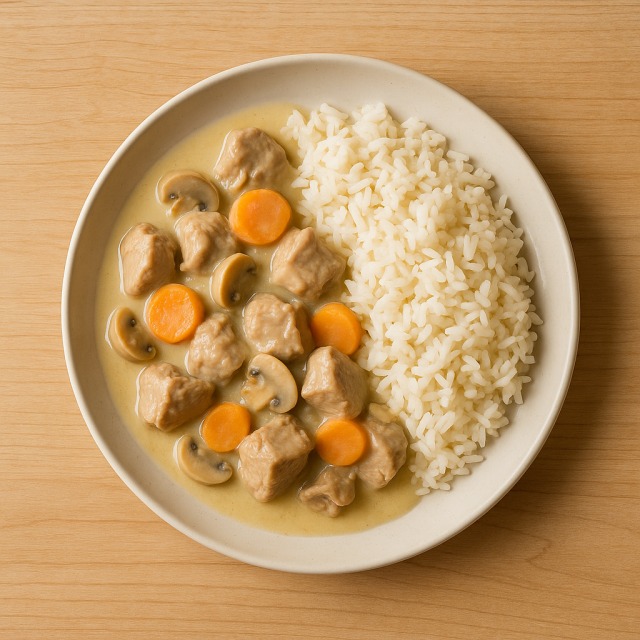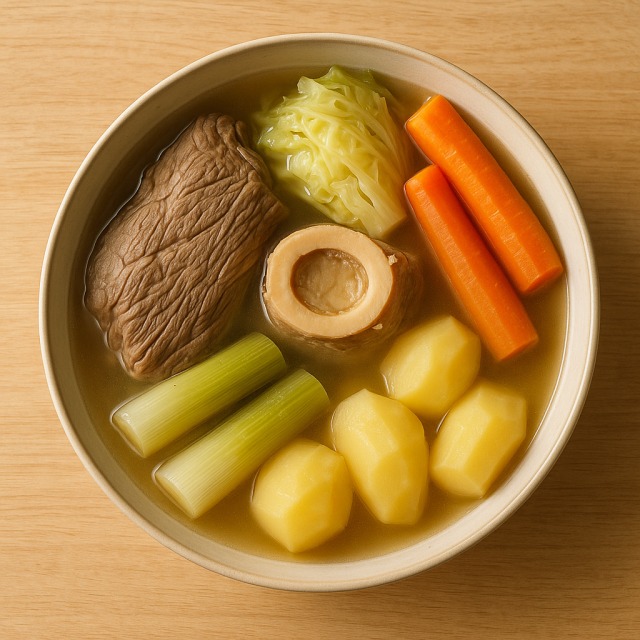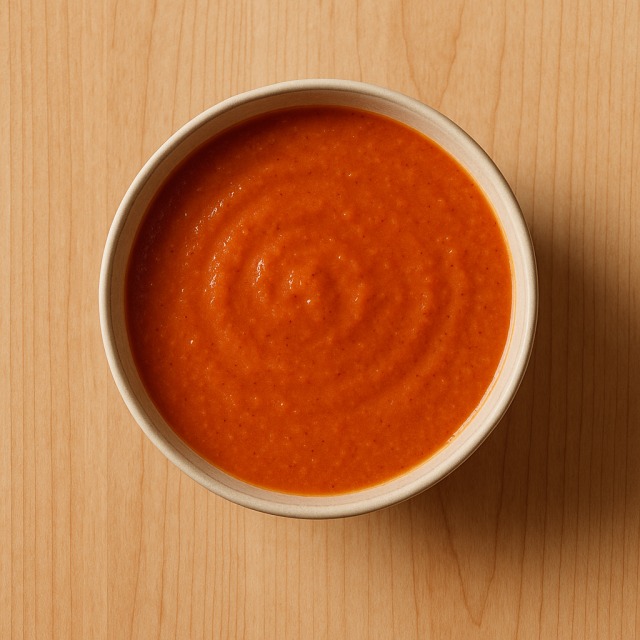Calorie Chart / Recipes / Beef bourguignon
How Many Calories Are in Beef bourguignon?
Calculation of the nutritional value & Recommended Dietary Intake of beef bourguignon
For g and a calorie requirement of kcal
| Calories 340 kcal | Proteins 26 g | Lipids 20 g | Carbohydrates 14 g |
| 17% | 35% | 30% | 5% |
Health benefits of beef bourguignon

Beef bourguignon - 100g
Calories 170 kcal
Proteins 13 g
Lipids 10 g
Carbohydrates 7 g
Beef bourguignon is considered a moderate-calorie stew, supplying enough energy to act as a satisfying main dish without being as dense in calories as many creamy casseroles. Its slow cooking method helps gelatinize the collagen in the beef connective tissue, providing a source of natural gelatin that may support joint health. The meat also delivers highly bioavailable iron and vitamin B12, two micronutrients essential for red-blood-cell production and for combating fatigue that can arise when one reduces calories too drastically.
Because the traditional recipe simmers in red wine, the dish inherits a small share of polyphenols such as resveratrol, compounds that are purported to have cardiovascular-protective properties. Carrots, onions, and mushrooms often cooked in the sauce add provitamin A, potassium, and selenium, making the nutrient profile broader than that of plain meat. Altogether, beef bourguignon brings proteins for muscle maintenance, a balanced amount of lipids for flavor and satiety, and just enough carbohydrates from vegetables and the wine reduction to replenish glycogen without an excessive spike in calories. These assets make it attractive both to athletes tailoring their calories and to dieters seeking nutrient density per calorie.
Historically, the recipe comes from Burgundy, where marinating tougher beef cuts in wine turned an inexpensive ingredient into tender fare. This cultural background explains why one pot can feed several people while keeping individual calories under control. Four to six hours of gentle cooking also means less need for added fat at the table, another plus for anyone counting calories.
Tips for incorporating beef bourguignon into a balanced diet
To keep overall calories reasonable, pair a portion of beef bourguignon with fiber-rich sides instead of starch-heavy ones. A ladle of the stew served over half a cup of brown rice or alongside steamed green beans balances the plate with extra vitamins and fills you up for fewer calories than buttery mashed potatoes. If you crave a more traditional pairing, replace part of the usual potato quantity with diced carrot; the natural sweetness complements the wine sauce while diluting the calorie load.
Another idea for athletes aiming to increase proteins without overshooting calories: shred leftover beef bourguignon meat and fold it into a light whole-grain wrap with fresh arugula and a spoon of yogurt sauce. You obtain a portable meal rich in proteins yet controlled in calories. For winter comfort, spoon the stew on roasted pumpkin cubes; the subtle sweetness magnifies the Burgundy wine aroma while adding beta-carotene for very few extra calories.
If you plan a festive menu, precede the dish with a simple vegetable soup and finish with a portion-controlled dessert such as two scoops of sorbet. This three-course structure helps distribute calories evenly, prevents overeating, and provides texture variety.
Frequently Asked Questions
- How many calories are in beef bourguignon?
- There are about 170 kcal per 100 g.
- Is beef bourguignon high in fat compared with its calories?
- With roughly 10 g of lipids for the 170 kcal, the dish supplies a moderate fat ratio; most of its calories still come from proteins and the long-simmered sauce rather than excessive added fat.
- Can I freeze beef bourguignon without altering its calories?
- Freezing does not change the calories; what you freeze is exactly what you thaw, so the calorie content per 100 g remains the same.
- Does removing visible fat before cooking lower the calories significantly?
- Yes, trimming external fat or skimming the sauce after refrigeration can shave several calories per serving while leaving the flavorful collagen-rich meat intact.
- What is a lighter side dish that will not add too many calories?
- Steamed broccoli, sautéed zucchini, or a small portion of quinoa boost fiber and micronutrients without dramatically increasing the calories of the meal.
- Is beef bourguignon suitable for a post-workout meal when tracking calories?
- Its balance of proteins, moderate carbohydrates, and savory sauce makes it suitable; just control portion size so the calories fit your post-exercise target.
Similar foods
Information provided by Calorie Menu may contain inaccuracies or errors. It cannot, under any circumstances, substitute medical advice or medication.










